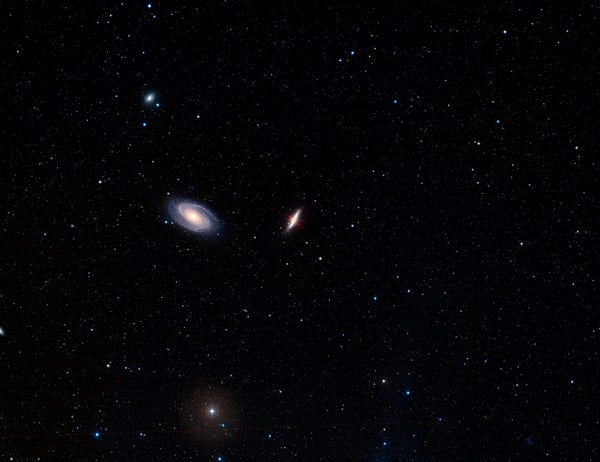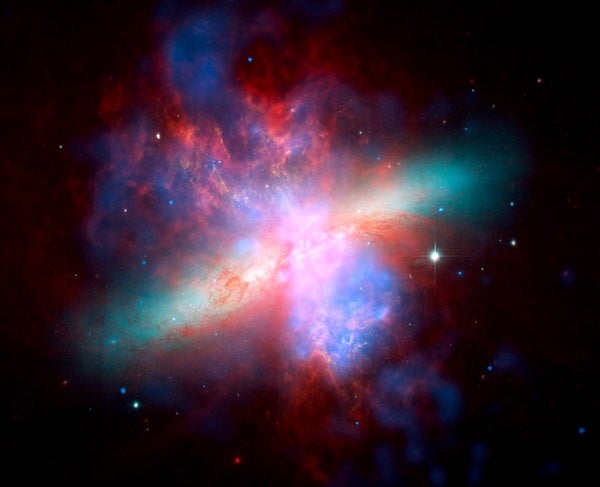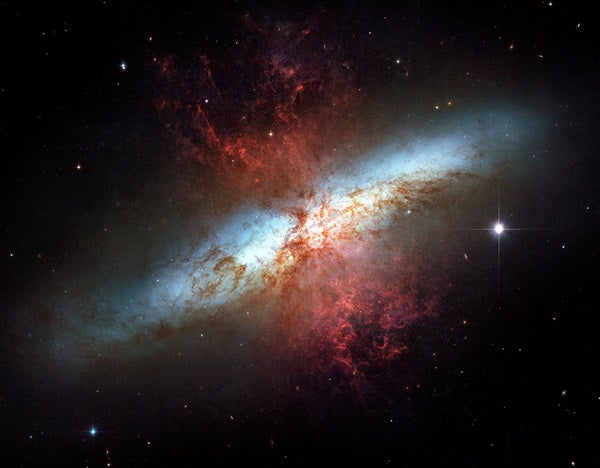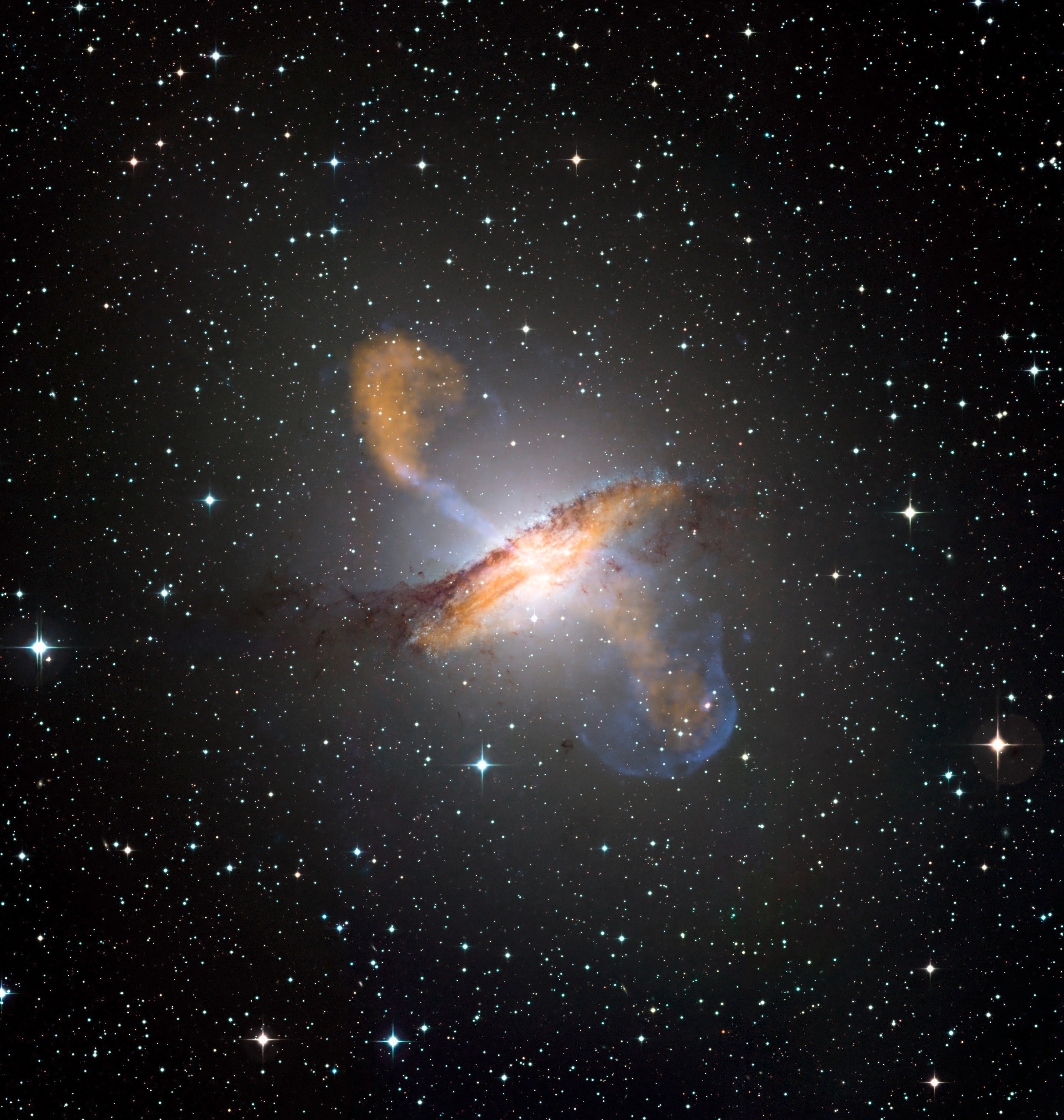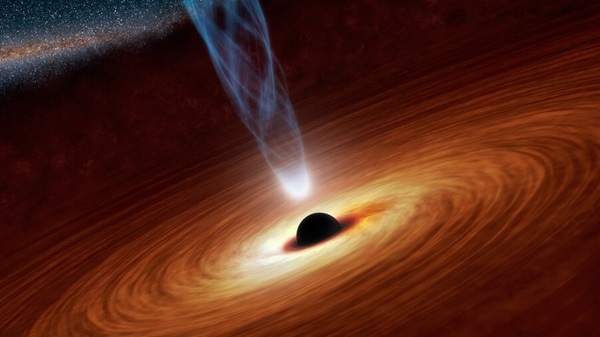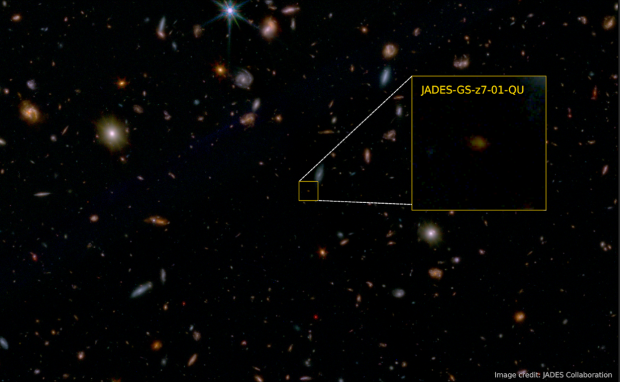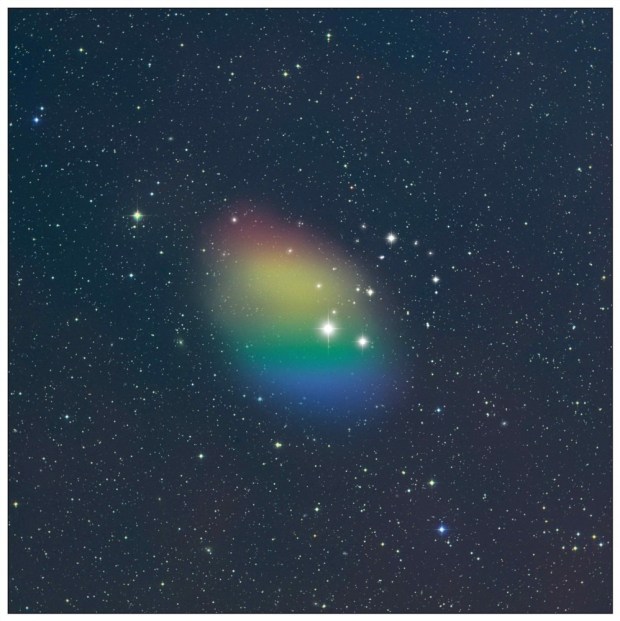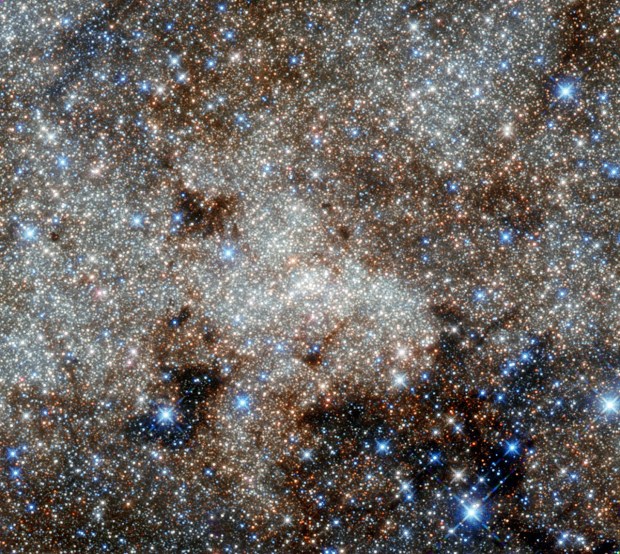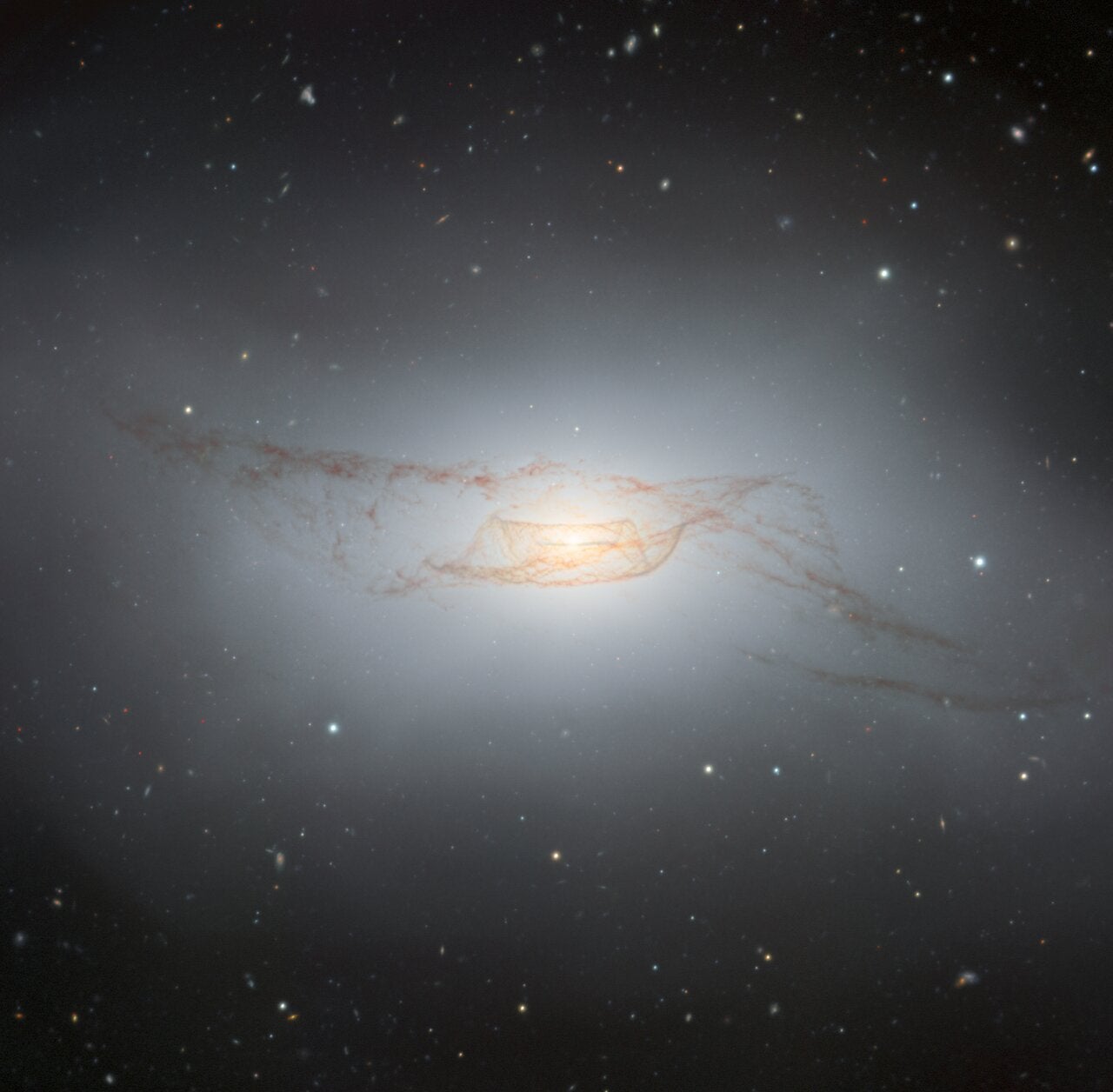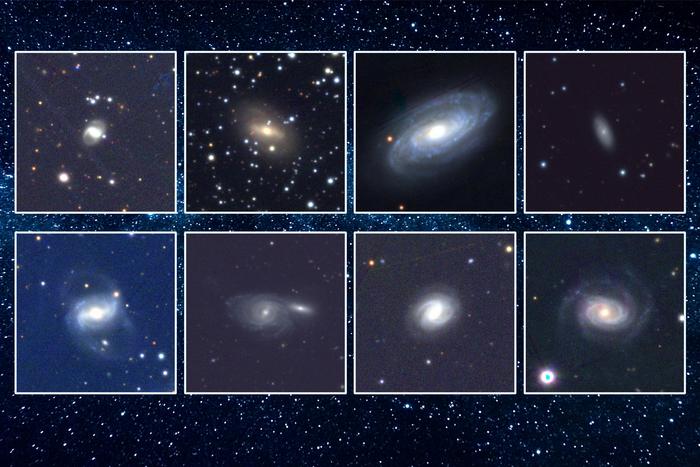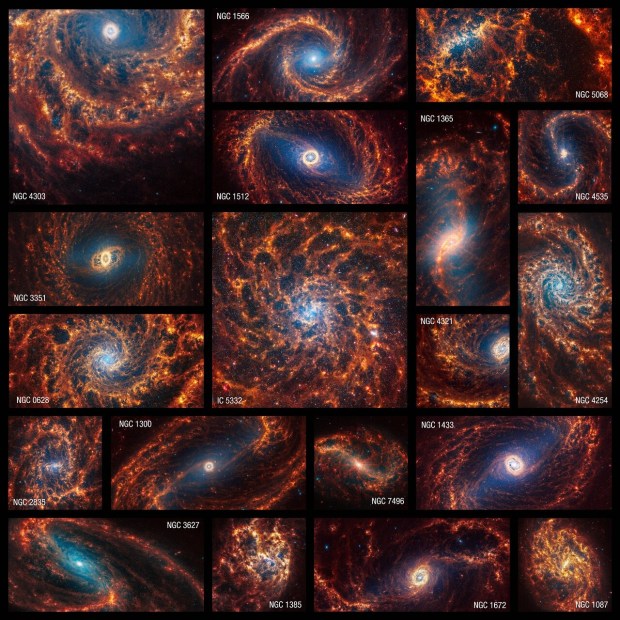The Big Dipper is generally the first star group youngsters learn. This asterism seems benign and tranquil and — far from the bustling creamy glow of the Milky Way — uncomplicated. For astrophysicists, its background darkness is exactly the quality that beckons most: Here observers peer through the thinnest amount of foreground Milky Way material, affording a relatively unobstructed view into intergalactic space. Not surprisingly, a Hubble astronomer chose this spot for the now-famous first “Deep Field” photograph in 1995.
And it is also within the Big Dipper, on the final day of 1774, that German astronomer Johann Bode found two pale “nebulous patches” less than 1° apart. Five years later in France, Pierre Méchain, the friend and assistant of French astronomer Charles Messier, independently rediscovered those smudges, which Messier quickly added to his catalog as numbers 81 and 82.

Bringing the universe to your door. We’re excited to announce Astronomy magazine’s new Space and Beyond subscription box – a quarterly adventure, curated with an astronomy-themed collection in every box. Learn More >>.
As telescopes improved during the 19th century, M81 was seen as a beautiful if unexceptional “spiral nebula.” But its companion, M82, remained a puzzle. Even today, through large amateur scopes, it resembles neither spiral nor elliptical galaxies, but looks rather like a cigar crossed by dark dust lanes. Astronomers soon shrugged and listed it as “irregular,” a category it maintained until the great 20th-century instruments uncovered unique explosive-looking detail that demanded some sort of explanation.
Slowly, its status shifted and M82was listed as an “exploding galaxy,” a description still common in textbooks. But what could this mean, exactly? Galaxies are huge assemblages of stars, dust, and gas. Astronomers have seen only one exploding star in M82 — in 2014 — although they did detect radio evidence of a hidden supernova in 2007. Gas doesn’t explode either. Neither does dust. So although M82 certainly looks like someone set off dynamite in its core, there’s no reason to call it an exploding galaxy when barely anything in it has actually done so.
So what’s going on here? M82’s long cigar shape resembles an edgewise spiral galaxy, and better photographic techniques reveal fountains of material thrown violently upward and downward from its flat central plane. At the same time, astronomers measuring its distance found that M82 and its normal-looking neighbor M81 are just 12 million light-years from Earth. Among our nearest galactic companions, they’re surely sufficiently close by for detailed study.
Radio telescopes provided a clue in 1953 when they found that M82 emits intense radio energy. The galaxy was then given yet another label: Ursa Major A, the brightest radio source in the Great Bear constellation. Invisible sections of the electromagnetic spectrum now promised to yield more information, and in the 1990s, the Chandra X-ray Observatory found intense emissions at those super-energetic wavelengths. These emanate 600 light-years from M82’s center and fluctuate strangely. They appear to come from the first-ever intermediate-mass black hole candidate, weighing somewhere between 200 and 5,000 solar masses. This object, however, is definitely not responsible for M82’s bizarre appearance.
Where M82 really dazzles is in yet another part of the spectrum: the infrared, commonly regarded as heat energy. In this type of light, M82 is the brightest galaxy in the universe. Moreover, infrared images reveal two buried spiral arms, proving that M82 is indeed an edge-on spiral, albeit one that has undergone some strange metamorphosis.
This infrared energy provides a major clue to the true nature of this enigmatic city of suns. We see an infrared excess in only a few other galaxies, most notably Centaurus A (number 42 on our list) and NGC 5195, companion to the Whirlpool Galaxy (M51). These have one thing in common: Each currently collides with another galaxy.
Suddenly, everything makes sense: This is nothing less than the nearest galactic collision. Turns out, M82’s companion M81 is not irrelevant, like strangers in the same elevator. The two presently dance a gravitational minuet, whirling around and through each other, a process that will ultimately merge them into a single entity. Even now, only about 130,000 light-years separate the two, little more than the width of our Milky Way. A few hundred million years ago, their last close encounter stirred up M82 and roiled its gases, triggering wild bursts of new star formation.
The innermost 1,000 light-years of M82 is a runaway nursery, where stars are generated 10 times faster than in our Milky Way. Within M82, the prolific production of billions of new suns and the turbulent, swirling flow of gases is indeed almost “explosive,” and thereby incites all that infrared and radio noise. Even in visible light, M82 shines five times more brilliantly than our galaxy, some of it coming from a hundred newly minted globular found in 2005 by the Hubble Space Telescope.
It clearly was time to reclassify M82 once again, a nearly annual ritual like Thanksgiving. It is now labeled, hopefully permanently, a “starburst galaxy.” Although its days are numbered as a separate entity thanks to its imminent merger, M82 is nonetheless enjoying a final heyday, an ironic springtime celebrated exuberantly by youthful new suns and dazzling bright lights.

